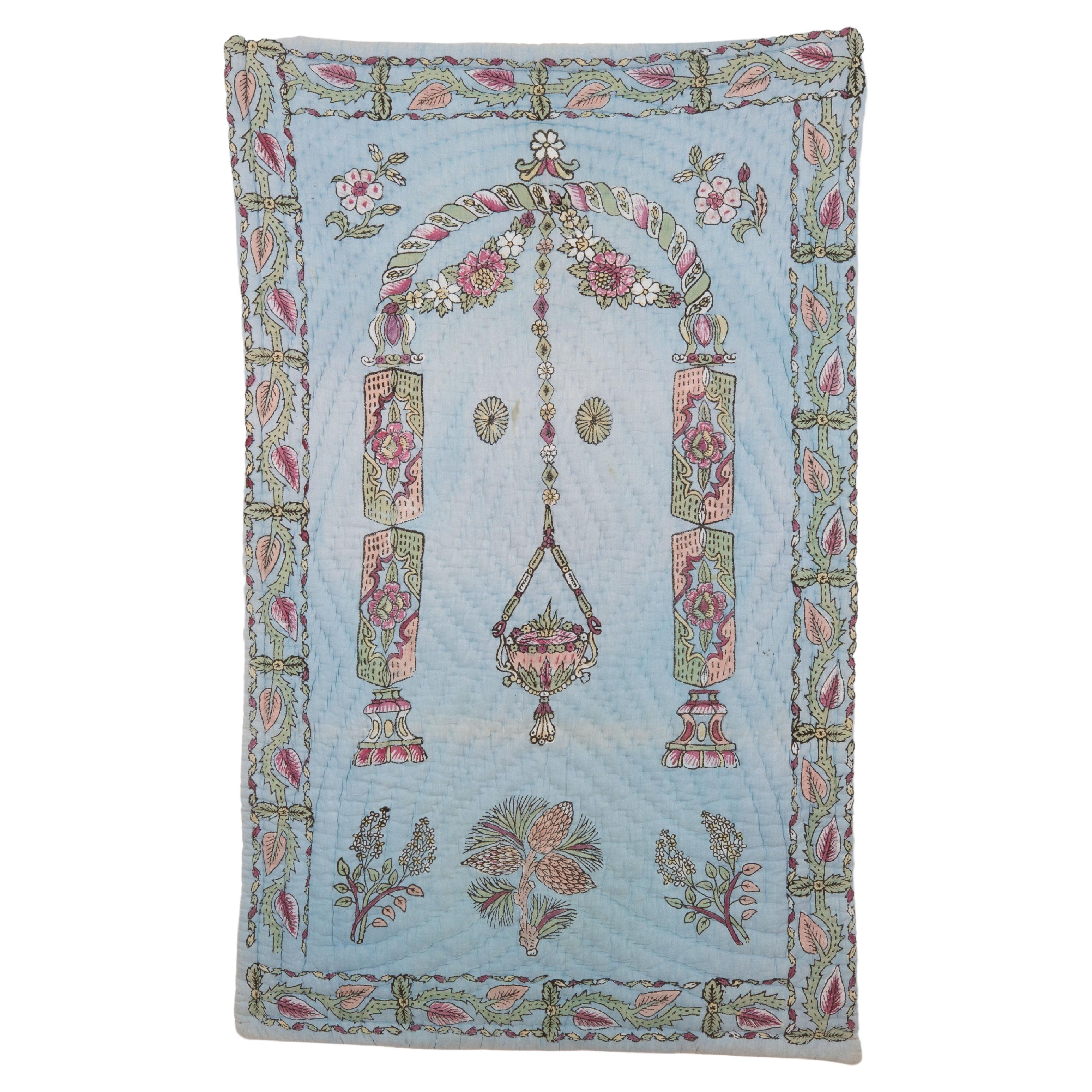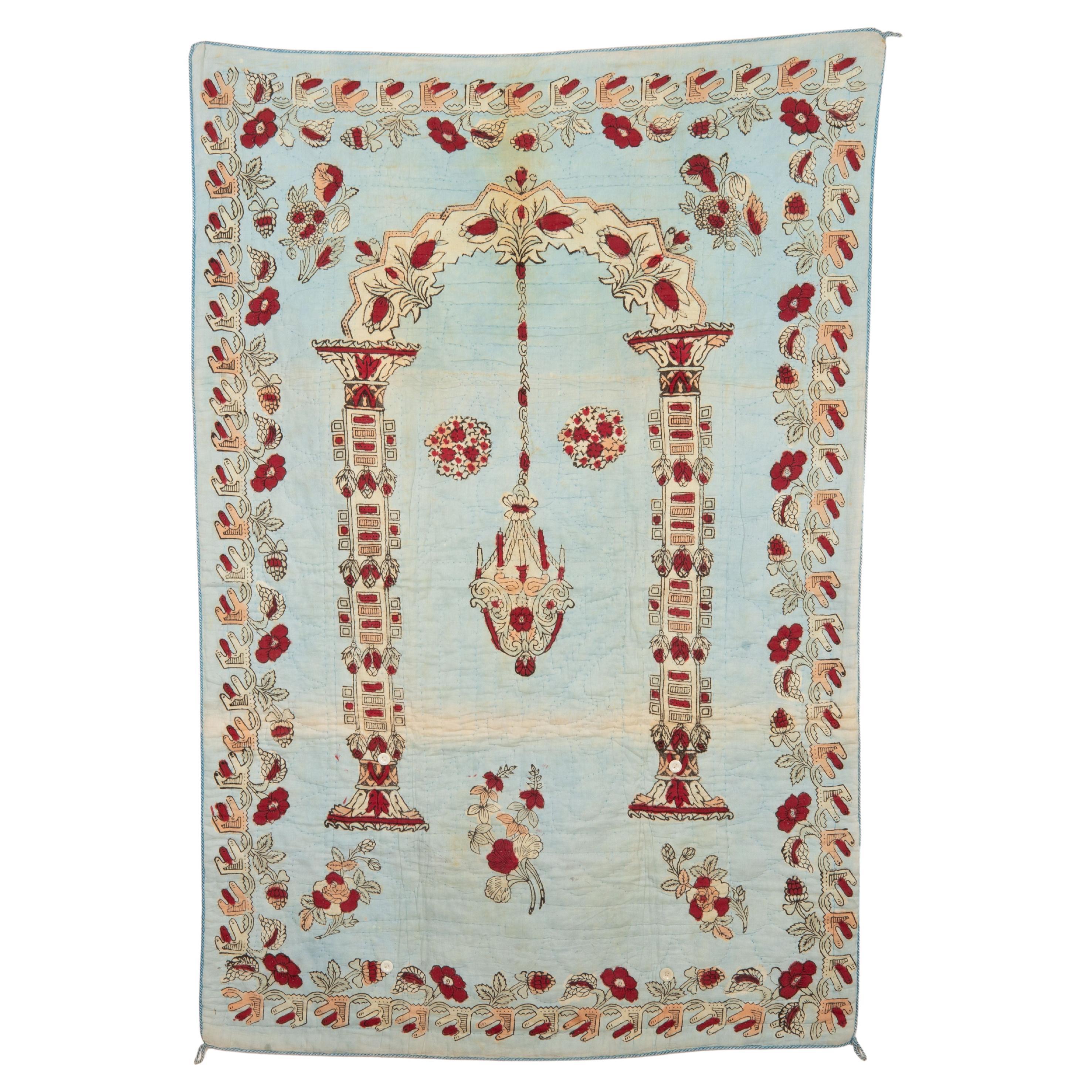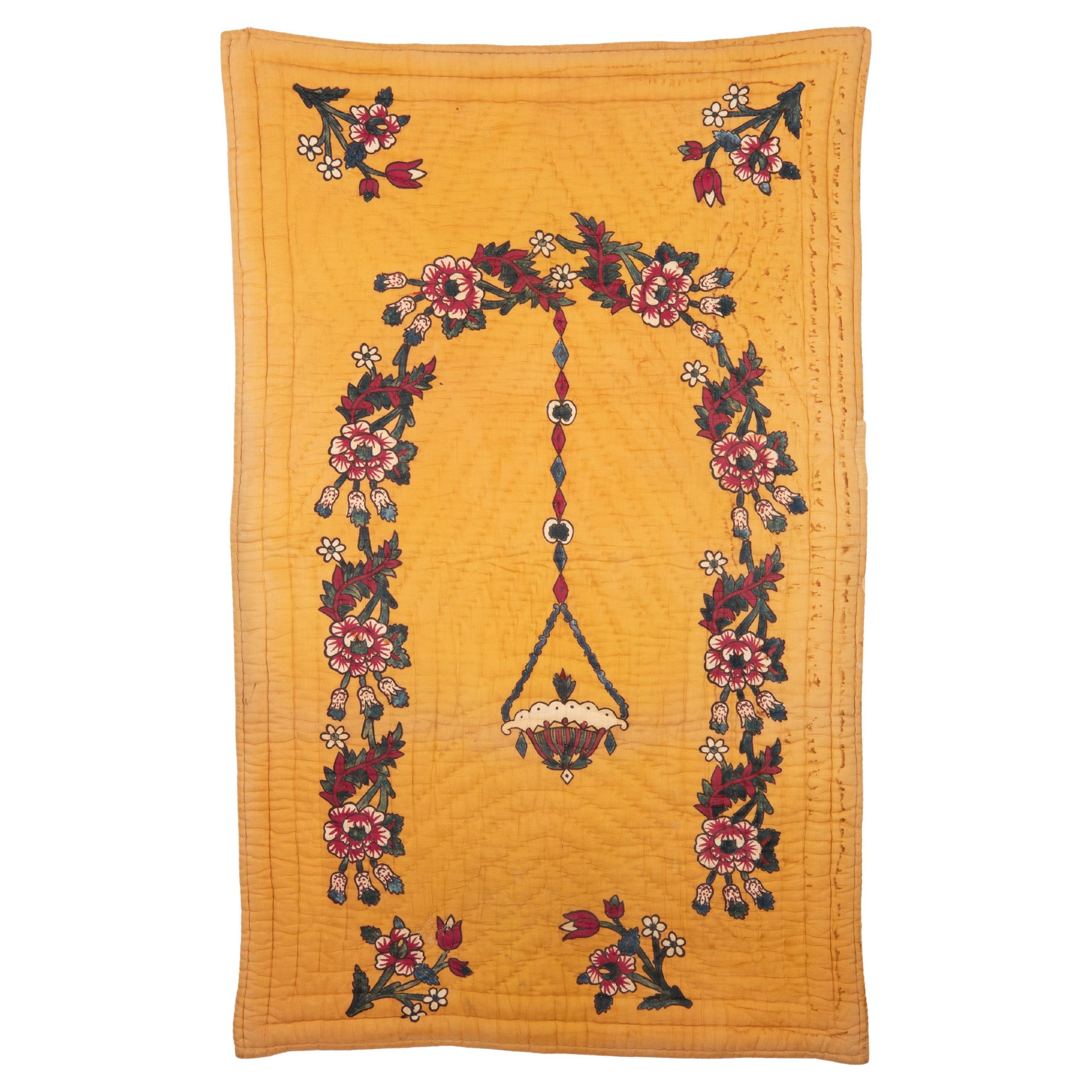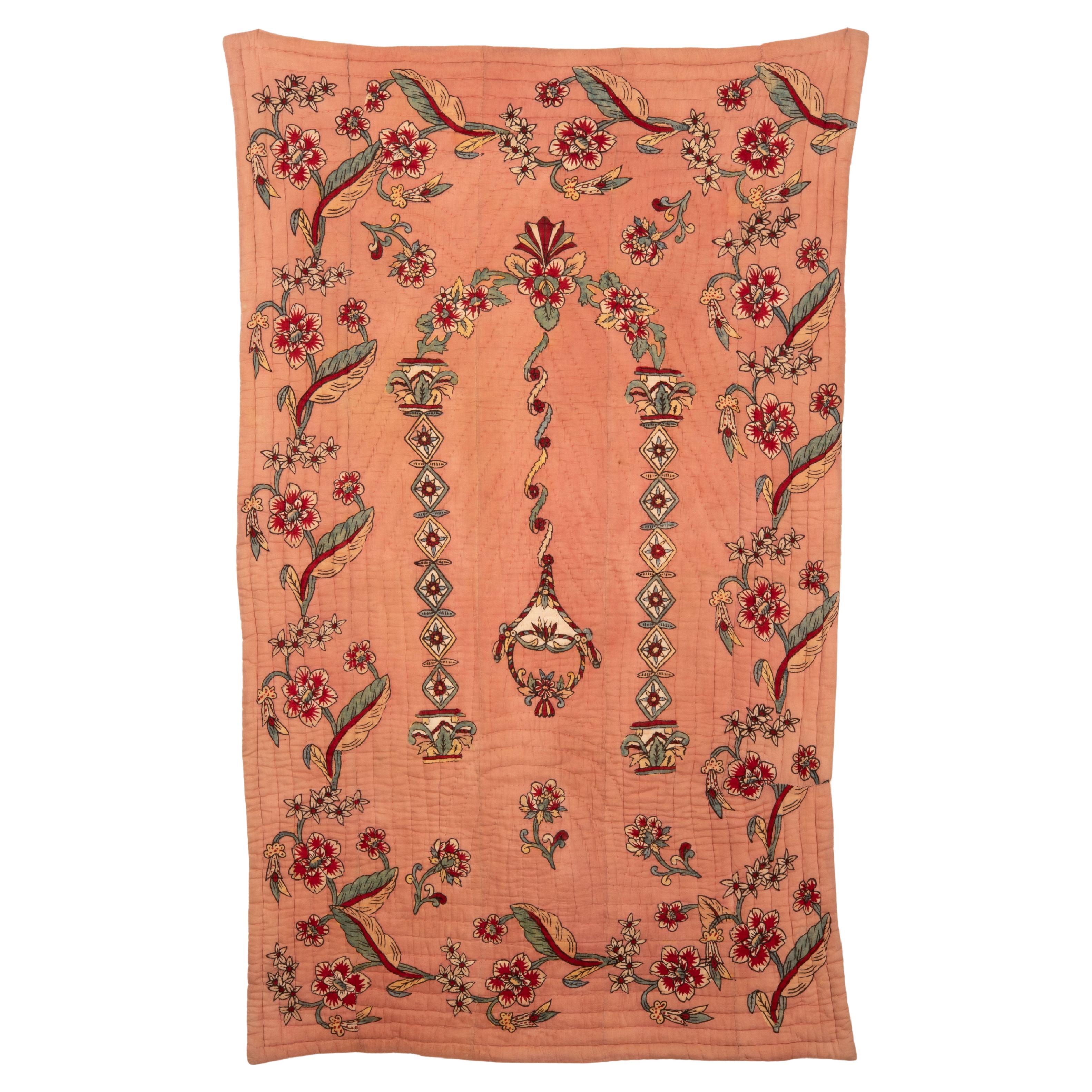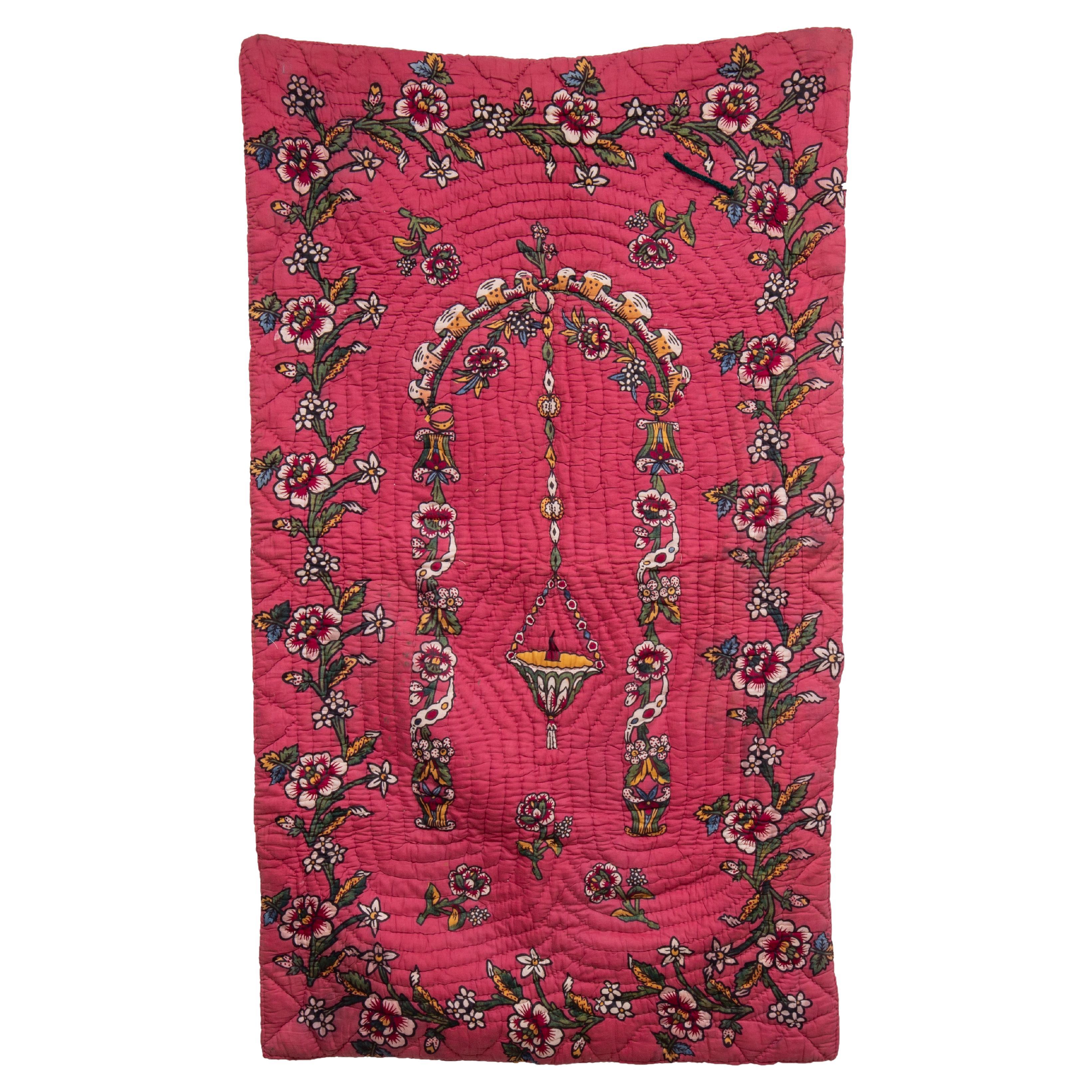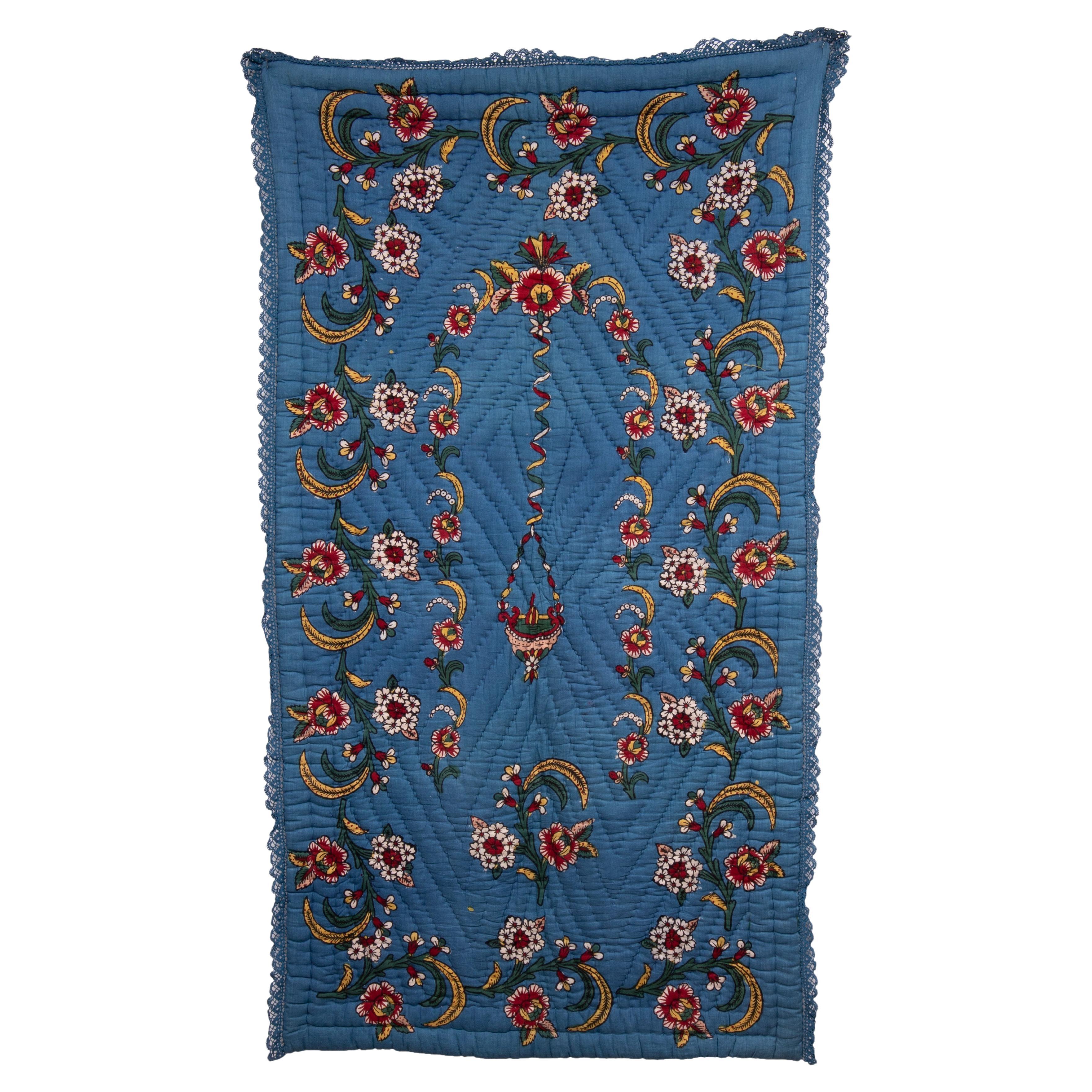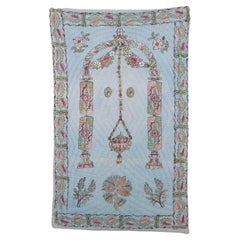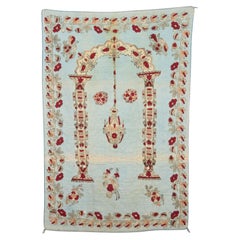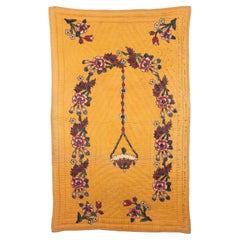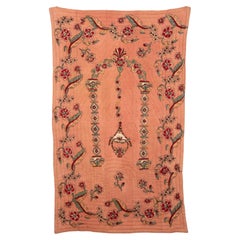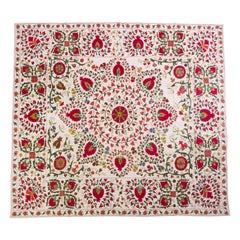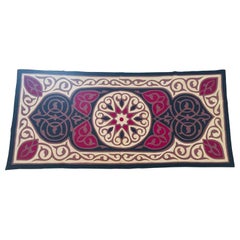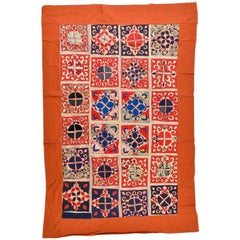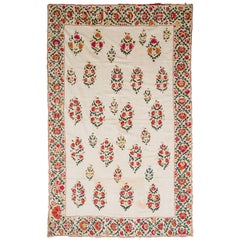Items Similar to Hand Block Printed Anatolian Quilt, Early 20th C
Want more images or videos?
Request additional images or videos from the seller
1 of 9
Hand Block Printed Anatolian Quilt, Early 20th C
$850
£645.04
€738.62
CA$1,207.91
A$1,314.66
CHF 690.19
MX$15,883.04
NOK 8,662.60
SEK 8,167.80
DKK 5,513.76
About the Item
Hand block printing is one of the land marks of Western Anatolian material culture. These quilts have been used either as prayer mats of wall hangings.
- Dimensions:Height: 50.4 in (128 cm)Width: 31.11 in (79 cm)Depth: 0.2 in (5 mm)
- Style:Rustic (Of the Period)
- Materials and Techniques:Cotton,Quilted
- Place of Origin:
- Period:
- Date of Manufacture:1900s
- Condition:Wear consistent with age and use.
- Seller Location:Istanbul, TR
- Reference Number:Seller: 83711stDibs: LU1827332259562
About the Seller
4.9
Platinum Seller
Premium sellers with a 4.7+ rating and 24-hour response times
Established in 1987
1stDibs seller since 2016
1,404 sales on 1stDibs
Typical response time: <1 hour
- ShippingRetrieving quote...Shipping from: Istanbul, Turkey
- Return Policy
Authenticity Guarantee
In the unlikely event there’s an issue with an item’s authenticity, contact us within 1 year for a full refund. DetailsMoney-Back Guarantee
If your item is not as described, is damaged in transit, or does not arrive, contact us within 7 days for a full refund. Details24-Hour Cancellation
You have a 24-hour grace period in which to reconsider your purchase, with no questions asked.Vetted Professional Sellers
Our world-class sellers must adhere to strict standards for service and quality, maintaining the integrity of our listings.Price-Match Guarantee
If you find that a seller listed the same item for a lower price elsewhere, we’ll match it.Trusted Global Delivery
Our best-in-class carrier network provides specialized shipping options worldwide, including custom delivery.More From This Seller
View AllHand Block Printed Anatolian Quilt, Early 20th C
Located in Istanbul, TR
Hand Block Printed Anatolian Quilt, Early 20th C.
Hand block printing is one of the land marks of Western Anatolian material culture. These quilts hav...
Category
Early 20th Century Turkish Rustic Pillows and Throws
Materials
Cotton
Hand Block Printed Anatolian Quilt, Early 20th C
Located in Istanbul, TR
Hand block printing is one of the land marks of Western Anatolian material culture. These quilts have been used either as prayer mats of wall hangings.
Category
Early 20th Century Turkish Rustic Quilts and Blankets
Materials
Cotton
Hand Block Printed Anatolian Quilt, Early 20th C
Located in Istanbul, TR
Hand block printing is one of the land marks of Western Anatolian material culture. These quilts have been used either as prayer mats of wall hangings...
Category
Early 20th Century Turkish Rustic Quilts and Blankets
Materials
Cotton
Hand Block Printed Anatolian Quilt, Early 20th C
Located in Istanbul, TR
Hand block printing is one of the land marks of Western Anatolian material culture. These quilts have been used either as prayer mats of wall hangings...
Category
Early 20th Century Turkish Rustic Pillows and Throws
Materials
Cotton
Hand Block Printed Anatolian Quilt, Early 20th C
Located in Istanbul, TR
Hand block printing is one of the land marks of Western Anatolian material culture. These quilts have been used either as prayer mats of wall hangings.
Category
Early 20th Century Turkish Folk Art Quilts and Blankets
Materials
Cotton
Hand Block Printed Anatolian Quilt, Early 20th C
Located in Istanbul, TR
Hand Block printing is one of the land marks of Western Anatolian material culture. These quilts have been used either as prayer mats of wall hangings.
Category
Early 20th Century Turkish Rustic Quilts and Blankets
Materials
Cotton
You May Also Like
Susani from Uzbekistan in Rare Size for Curtain, Table, Bed or Wall
Located in Alessandria, Piemonte
B/2004 - Wonderful "Susani" with a rare size, large central medallion with open pomegranates, symbol and wish of prosperity.
The Susani is the most classic and oldest gift for the ne...
Category
Mid-20th Century Uzbek Other Quilts and Blankets
Materials
Cotton
Late 20th Century Vintage Middle Eastern Suzani Quilted Turkish Textile
Located in Moreno Valley, CA
Middle Eastern end of the bed quilted textile with appliqué, elegant Moorish design in black, deep red and beige.
Ideal to use as a tablecloth on a centre or console table, on the ba...
Category
Late 20th Century Turkish Folk Art Textiles
Materials
Fabric
$1,000 Sale Price
20% Off
Turkoman Patchwork Textile, Tapestry or Armchair Upholstery
Located in Alessandria, Piemonte
Nice Turkoman patchwork textile with light colors, suitable for tapestry, headboard, armchair upholstery. They are all embroideries applied on a rein...
Category
1990s Turkmen Folk Art Tapestries
Materials
Cotton
19th Century Uzbek Silk Embroidered Suzani Tapestry
Located in New York, NY
19th century Uzbekistani hand spun linen Suzani with silk embroidered floral motif and silk ikat border. Reverse side has original antique Fine hand printed cotton backing.
Category
Antique 19th Century Uzbek Suzani Tapestries
Materials
Linen, Silk
$5,250 Sale Price
30% Off
714 - Beautiful Antique Turkish Ottoman Embroidery
Located in Paris, FR
714 - Beautiful mid-19th century ottoman embroidery with a nice floral pattern and beautiful natural colors, fully hand embroidered wit...
Category
Antique 1850s Turkmen Tribal Textiles
Materials
Metallic Thread
1850s Antique Turkish Family Prayer Rug 10'5''x8'1''
Located in Los Angeles, US
Antique Turkish Family Prayer Rug From 1850 10'5''x8'1''
one of a kind 1 of 1
more info upon request
Category
Antique Mid-19th Century Unknown Tribal Turkish Rugs
Materials
Wool, Cotton
More Ways To Browse
Antique Wall Hangings
Pink Quilt
Antique Prayer Mat
Vintage Striped Blanket
Antique Floral Quilt
Antique Indigo Quilt
Chinese Silk Brocade
Suzani Blanket
Antique Indigo Fabric
Peru Blanket
Quilts King Size
Viso Blanket
Antique Velvet Quilt
Paisley Blankets
Kente Cloth
Pendleton Vintage Blankets
Viso Mohair Blanket
Yoruba Textile
